Newsletter: As California burns, PG&E CEO promises: ‘We are going to fix our stuff’
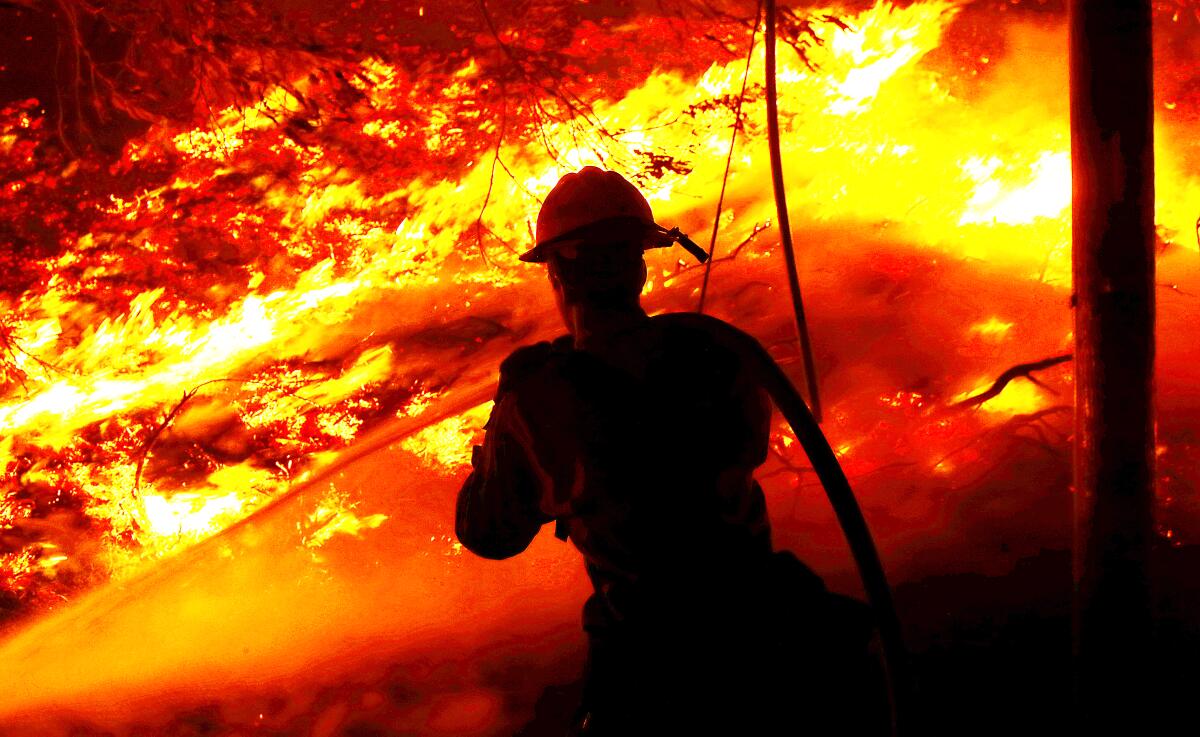
- Share via
This is the Oct. 14, 2021, edition of Boiling Point, a weekly newsletter about climate change and the environment in California and the American West. Sign up here to get it in your inbox.
I don’t envy Patti Poppe.
In the nine months since she took the helm of Pacific Gas & Electric, the nation’s largest and possibly most hated utility, Poppe has seen the firm potentially implicated in the 963,000-acre Dixie fire and brought up on criminal charges stemming from two other blazes. This for a company that last year pleaded guilty to 84 counts of involuntary manslaughter after sparking the fire that destroyed the town of Paradise, and a few months later exited bankruptcy after facing tens of billions of dollars in wildfire liabilities.
When I got on the phone with Poppe for the first time Wednesday, I was told she wanted to start with prepared remarks. Curious, I listened as the veteran utility executive insisted PG&E is finally making real progress on reducing the risk of ignitions. She said the company is taking “breakthrough actions” such as trimming and removing more trees in risky areas, adding weather stations and high-definition cameras to help identify threats in real time, and beginning to bury some electric lines underground.
“Every day, our system is safer than it was the day before,” she told me.
She also said PG&E has implemented new safety settings that have reduced ignitions by 90% since late July, compared to previous years, and is using technology to limit the scope and duration of intentional power shut-offs designed to prevent infernos.
“We’ll continue working every day to battle the enemy we all face, which is the changing climate around us,” she said.
With Poppe’s remarks concluded, I naturally had some questions — about climate, the energy transition and whether wildfire victims will ever be made whole. The following highlights from our conversation have been edited and condensed for clarity.
***
ME: Let’s start with clean energy, since so much of what California is doing to reduce carbon emissions and fight climate change depends on the electric grid. What new steps do you think are needed for the state to meet its goals, and how do we meet those goals while keeping the lights on during peak fire season?
POPPE: I actually find it quite inspiring. For example, when I think about the need for backup power resources when we take the necessary action of a Public Safety Power Shutoff, I imagine a day where electric vehicles are powering the home. So we’ve done two things: We’ve provided resilience, and we’ve decarbonized the transportation that is mobilizing that family. We can clean the air, help the war on climate change, and help people adapt to the changing climate of wildfire.
I imagine a future where maybe it’s not wireless power, but it is a whole lot less wires, particularly in our most fire-prone areas.
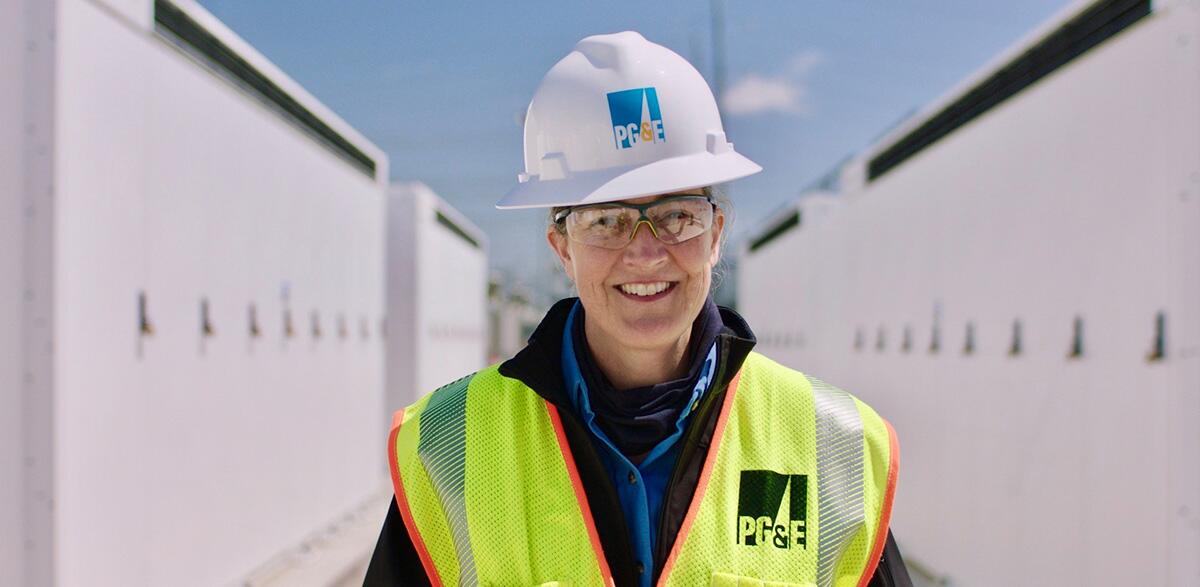
ME: In addition to electric cars, there’s building electrification — switching from space heaters and stoves that burn natural gas to ones that run on clean electricity. PG&E has supported policies that promote construction of all-electric homes. How much of the company’s business do you see shifting from gas to electricity, and how quickly?
POPPE: It’s a great question, and we still have a lot of work to do to answer it. I believe there are important targeted electrification efforts that we should make, and we will do that systematically. When we’re making an investment decision in our gas business, we should be asking ourselves, is this the time to convert this service to electric? We’re studying it pretty deeply.
ME: Critics of those efforts say it’s a terrible idea to make ourselves more dependent on the electric grid when wildfires and heat waves are already making it harder just to keep the lights on. What’s your response to that?
POPPE: I would love to flip that on its head for just a minute. This is a surprising statistic: The electric vehicles on the road in PG&E’s service area today have 6,700 megawatts of capacity. Now, they do need to be charged with electricity. But imagine a Flex Alert being averted because we actually leverage the supply that’s available in vehicles to power homes and businesses.
Sixty-seven hundred megawatts — that’s three Diablo Canyon nuclear power plants. It’s on the road today, and we are not using it as a power source. We’re only using it as a power draw.
Storage is the key to unlocking the potential of renewable energy, which we all understand is not available 24/7. But using the excess renewable energy that we have on a daily basis to fuel our vehicles, and then allowing our vehicles to fuel our homes — it’s a totally different game, and I think it’s going to make for a resilient future. Yes, we are more reliant on electricity, but we have more resources to meet that demand. Carbon-free, distributed resources, so the power is where the people are.
ME: On that note, let’s talk about putting more power “where the people are.” There are a lot of folks furious with PG&E, Southern California Edison and San Diego Gas & Electric for pushing Gov. Gavin Newsom’s administration to slash net metering, the main program that incentivizes rooftop solar and storage installations. Why are you doing that?
POPPE: We believe, and I think the Legislature believes, that there was a time when cost incentives were necessary to enable technology to evolve. So in the early days of rooftop solar, net metering was an important enabler. But now the cost reductions have come. There are economic ways to deploy solar, and I think there’s a way for utilities and independent solar and battery providers to work together to optimize the system, and no longer have winners and losers. Let’s make it accessible to all.
ME: Shifting gears to wildfires, you said PG&E is trying to cut off electricity to fewer people during high-risk conditions, and keep those interruptions shorter. On Monday of this week, you shut off power to 25,000 homes and businesses, and another 16,000 customers might lose electricity on Thursday. Would these events have been worse in the past?
POPPE: There’s no doubt. Looking back historically at similar conditions, hundreds of thousands of customers would have been impacted. We are narrowing that down through our sectionalizing devices in particular. We’ve installed 1,136 devices that break the grid down into smaller sections. And that enables us to have fewer people impacted.
We’ve also developed a sophisticated algorithm that helps us pinpoint high-risk areas. If we’d had it in place in previous years, we would have prevented 96% of the structures that were damaged or lost due to utility-caused wildfires. And we can do that while fewer people are being impacted by Public Safety Power Shutoffs.
ME: There’s a fire burning right now in Santa Barbara County, the Alisal fire. It’s scorched 15,000 acres since Monday and forced hundreds of homes to evacuate. Are they any indications that PG&E’s infrastructure could be involved?
POPPE: It is early to know, but we don’t have equipment that was located near the ignition point. But obviously there’s nothing definitive yet.
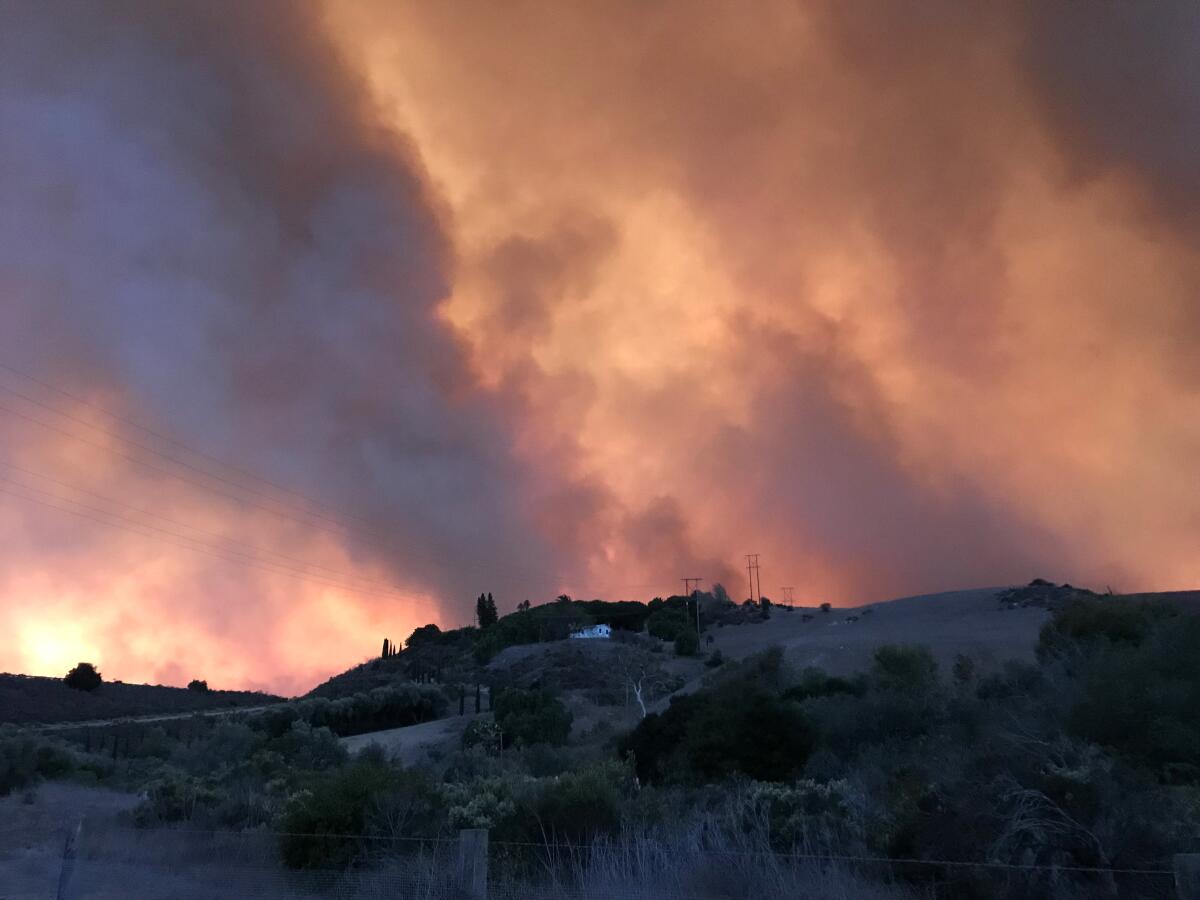
ME: You recently set a goal of burying 10,000 miles of electric lines, at an estimated price tag of $15 billion to $30 billion. That’s after years and years of California utilities suggesting undergrounding was too expensive to work at scale. When can we expect to see more details on which lines will be buried and how much it will actually cost?
POPPE: We are making great progress. We did a national request for information from big construction companies, contractors, other utilities, just getting the best information. We are reviewing the responses. There are some great ideas and technologies that we have not been deploying that we will be able to.
We also formed a voluntary undergrounding council of community leaders, environmental groups, tribal leaders, Caltrans, California Professional Firefighters. So many people want to help enable undergrounding. And we can’t actually do this by ourselves. It’s a huge infrastructure project, probably one of the largest infrastructure reimaginations that has occurred in our state’s history. We need partners.
I also think people don’t understand that only about 10% of wildfire ignitions are caused by utility equipment. And we’re going to end that. We are going to fix our stuff. Everyone can rest assured about that. But there’s 90% of the problem left after that. And so there’s a bigger conversation. We need to make California safe and resilient to these climate conditions.
ME: I also want to ask you about an investigation that was published this week by KQED and the California Newsroom, reported by Lily Jamali. They found that Wall Street hedge funds are selling off PG&E stock en masse, driving down the share price. The result is that wildfire victims, still waiting for payouts, are left holding the bag. The PG&E stock they received as part of the bankruptcy exit plan was supposed to be worth $6.75 billion, but now it’s only worth $4.5 billion.
I realize this arrangement was made before you arrived. But how was this allowed to happen? Is it PG&E’s fault if fire victims are never made whole?
POPPE: One of the key things that I am committed to is making it right and making it safe. And part of making it right is making it right for victims. And this agreement that was struck has the potential to be very rewarding for victims.
But one of the things that’s hard for people to understand is: We have to compete to attract capital. Our stock price is driven by investors’ willingness to put their money into a California utility. And who are these investors that we would want to own PG&E stock? Fewer hedge funds. Most utility stock is owned by long-term investors, people who manage retirement funds. So I remind myself that a utility stock should be owned by moms and pops, who entrust their hard-earned dollars to us.
So I think that it is both on PG&E to prove ourselves to be strong operators, and on California to prove to investors that we are a great place to invest their dollars. Those signals come in public sentiment, in regulatory proceedings, in legislative proceedings. Those things matter to investors. And when they see that the investor-owned utility model has the support of regulators and legislators, then they feel more confident putting their clients’ dollars into PG&E stock.
Currently, PG&E’s stock trades at a significant discount relative to our peers in this sector, and that is because people are afraid to invest in utilities in California. We need to change that narrative.
ME: So in terms of the payout that was promised to fire victims — you’re saying their being made whole depends on PG&E succeeding as a company, and on California showing support for PG&E to help get the stock price up?
POPPE: Yes. And we’ve got a lot of room to get the stock price up.
People can argue about the arrangement, and you’re right, I wasn’t here when it was made. But given what the arrangement is, we have a mutual interest with wildfire victims in PG&E being a successful investor-owned utility. We need the capital markets so that we can fund the infrastructure rebuild, and so we can participate in the decarbonization of our economy.
There’s a real win-win opportunity. But investors have to be able to trust that the business environment in California is attractive, and that they are not seen as villains, but rather that their capital is a key component of making California safe again.
***
And now, here’s what’s happening around the West:
TOP STORIES
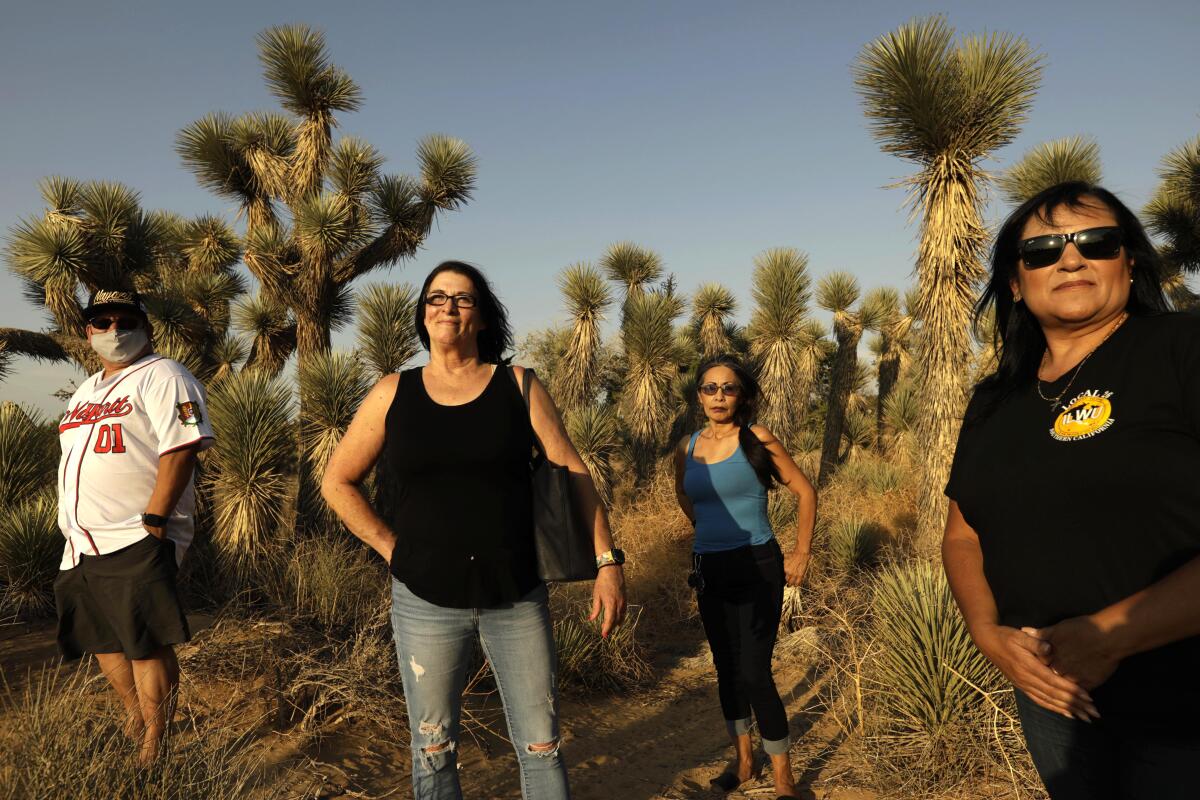
Working outside at a farm or construction site can be dangerous during a heat wave — but working inside a warehouse is potentially deadly, too. In the latest installment in our Extreme Heat series, Anna M. Phillips reveals what life is like at a Rite Aid facility in Lancaster, where workers say at least three employees fell ill with heat exhaustion in June. The number of companies that wouldn’t even tell Anna if their warehouses are fully air conditioned — including Costco, Target and Walmart — is startling.
The Southern California oil spill is bad, but it could have been worse. My colleagues Hannah Fry and Robin Estrin report that a combination of lucky ocean currents and fast action by local officials has helped to protect coastal wetlands and prevent harsher impacts, at least so far. But there’s lots of toxic pollution across the region that doesn’t get nearly this much attention. Columnist Patt Morrison examines some examples, from groundwater contamination in Rialto to Exide’s battery recycling plant in Vernon.
The Metropolitan Water District of Southern California is paying farmers along the Arizona state line to leave their fields dry. The goal is to keep more Colorado River water in Lake Mead and prevent the reservoir from crashing, The Times’ Ian James reports. In other drought news, columnist Steve Lopez spotlights the Coachella Valley’s roughly 120 golf courses, some of which suck up as much as 1 million gallons a night. Many of those desert courses are irrigated with groundwater from an underground aquifer — which is then replenished with drought-threatened water supplies from the Colorado River or Northern California.
POLITICAL CLIMATE
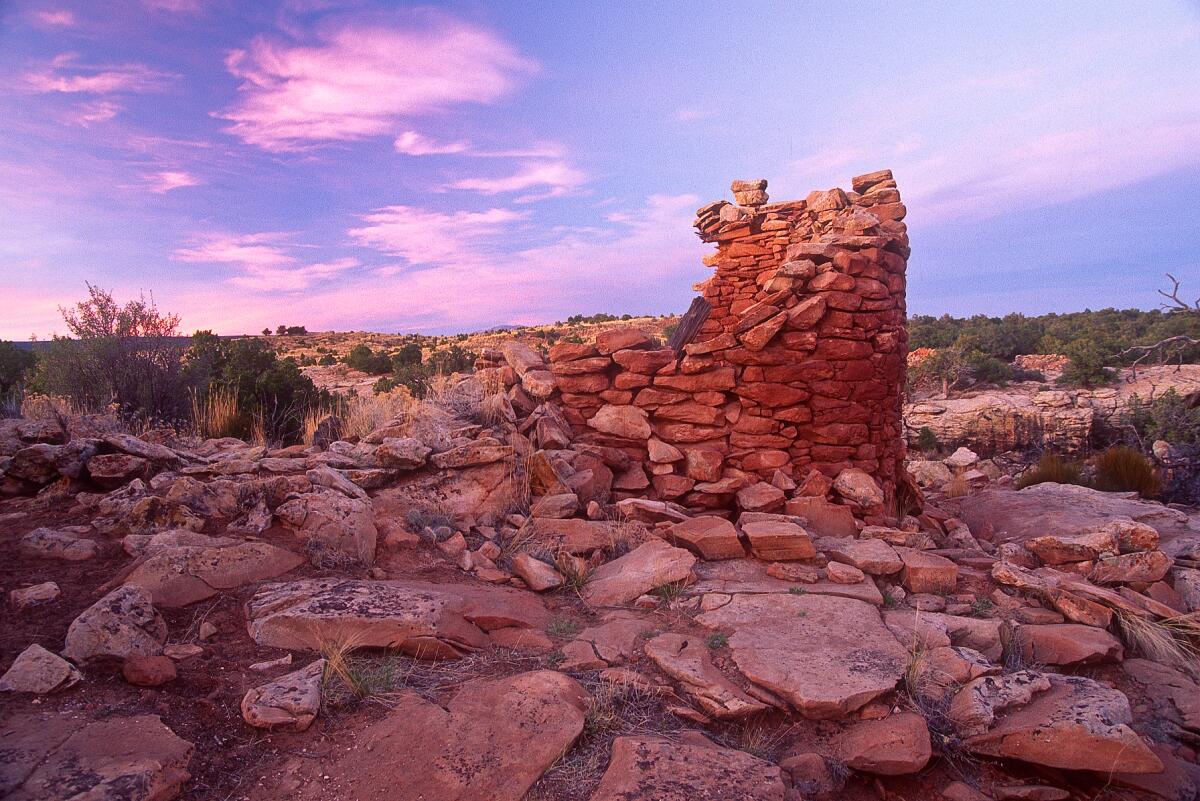
President Biden restored 2 million acres to Bears Ears and Grand Staircase-Escalante national monuments, fulfilling a key campaign promise. “Bears Ears is a living landscape. When I’ve been there, I felt the warmth and joy of ancestors who have cared for this special place since time immemorial,” Interior Secretary Deb Haaland said, as reported by the Salt Lake Tribune’s Brian Maffly. But that doesn’t mean Native American activists are fully satisfied. Indigenous-led climate advocates are protesting at the White House under the banner “Build Back Fossil Free” this week, urging the president to block oil, gas and coal projects such as the Line 3 tar sands pipeline, which crosses tribal lands and is now operational, the Washington Post’s Ellie Silverman reports.
Gov. Gavin Newsom signed a bill that could outlaw the sale of new gas-powered lawn mowers, leaf blowers and chain saws as early as 2024. The bill could also require new portable generators to zero-emission by 2028, The Times’ Phil Willon reports. Supporters say the legislation will reduce air and noise pollution; hundreds of commenters on my Twitter feed feel otherwise.
Elon Musk says Tesla will move its headquarters from Palo Alto to Austin, Texas. Here’s the story from The Times’ Russ Mitchell. And here’s columnist Michael Hiltzik, who writes that Tesla is still heavily dependent on California’s electric car market and climate policies — and that the company’s move may even be a boon for California, if it spares the state from Musk’s “infantile outbursts about government oversight.” See also Russ’s story on vehicle collisions that Tesla’s auto-brakes failed to prevent.
Contractors working on California’s zero-emission bullet train say they’re another billion dollars over budget. That would add to the cost of a Central Valley segment currently budgeted at $22.8 billion, Ralph Vartabedian reports for The Times.
THE OIL SPILL
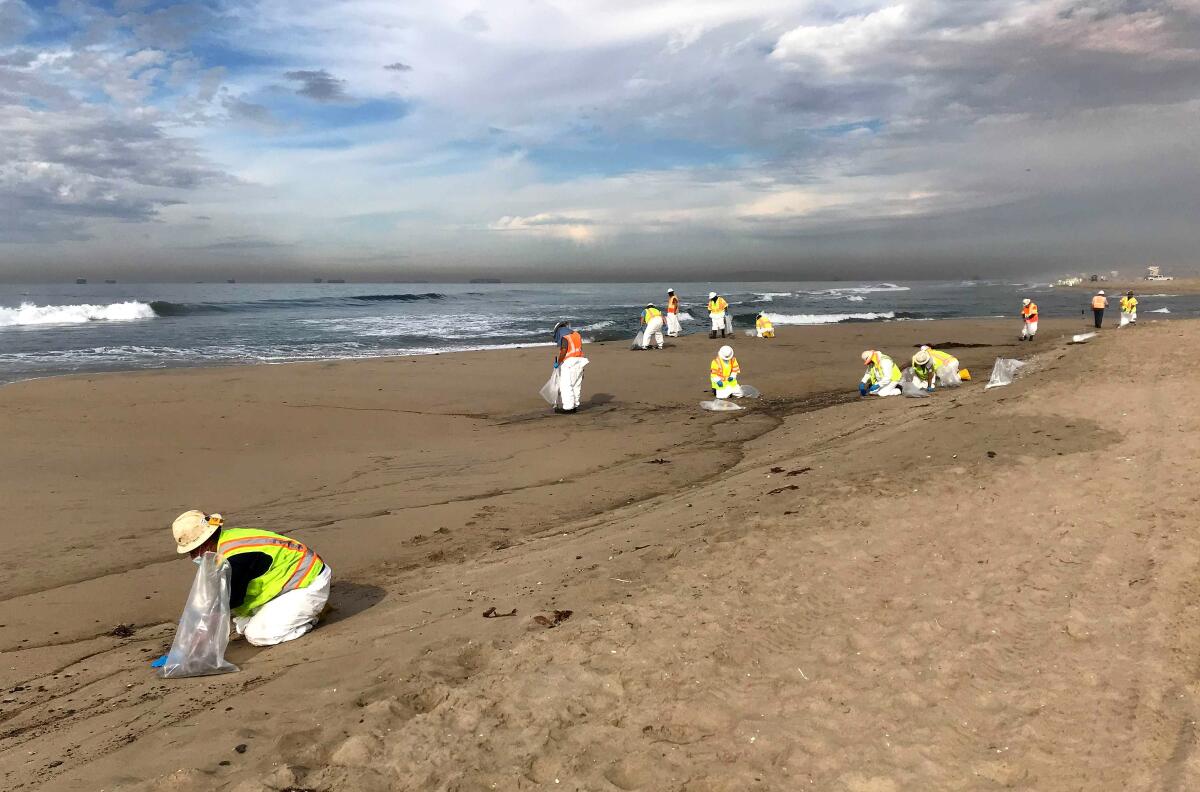
Beaches are back open in Orange County, with water quality tests showing the ocean is safe for humans. But the story is far from over. California’s attorney general has launched an investigation, against a backdrop of lingering questions about the 15-hour gap between the first reports of oil in the water and Amplify Energy Corp. alerting officials to a spill, and evidence that the company’s pipeline may have first taken damage nearly a year ago. Members of Congress are demanding answers on possible regulatory failures and the oil company’s allegedly slow response. And commercial fishers are feeling the pain. They worry that customers at the restaurants that buy their catch could shun local seafood for years, The Times’ Stephanie Breijo reports.
The oil spill threatens the remarkable comeback of the western snowy plover, a gray-feathered shorebird that makes nests from seashells. After years of habitat restoration, the first snowy plover nest in more than five decades was found on Huntington State Beach in 2017; there were 19 nests this year, Robin Estrin writes. In addition to shorebirds, researchers want to know how the oil spill might affect “the minuscule and mysterious ecosystem that scientists call the microbiome,” also known as “a vast menagerie of small and microscopic organisms that comprise the foundation of the food web,” Louis Sahagún writes. And in a twist, so many underwater creatures live on oil infrastructure that a study declared California’s offshore oil platforms to be one of the world’s most productive marine habitats. Here’s the absolutely fascinating story by Deborah Netburn and Sean Greene.
Fun fact: The infamous oil platform that caused the 1969 Santa Barbara spill is still active. If you’re wondering how that’s possible, read this explainer from Rosanna Xia, Susanne Rust and Anita Chabria on the economic and political factors that have allowed aging, leak-prone offshore wells to operate indefinitely. See also this piece by Jon Healey on the legal difficulties in forcing an oil company to stop producing, and this one by John Myers on the oil industry’s continuing pull in Sacramento. Those obstacles didn’t stop Times columnist George Skelton from calling for an end to offshore oil extraction, writing, “Oil helped build Southern California’s 20th-century economy. But in the 21st century, offshore production is worth far less than its environmental cost.”
Whatever happens next, California’s coastline has already changed immensely. Christopher Goffard dug up an old photo of towering oil derricks dominating Huntington Beach’s shoreline in the 1940s; as late as the 1970s, the city had more than 1,000 active wells. Today the areas threatened by the spill are better known for their natural beauty. Joe Mozingo is especially concerned about Laguna Beach, whose hills “plummet into the sea like the Cote d’Azur, creating a scalloped seascape of caves, cracks and arches, of blowholes, tide pools and white-sand beaches that are all as enchanting in their complexity as they are vulnerable.”
THE WEST ON FIRE
Gov. Gavin Newsom signed a bill making it easier for tribes and others to conduct controlled burns without the risk of legal liability. Experts say it’s a monumental step toward healthier forests, Hayley Smith reports for The Times. My colleague Lila Seidman, meanwhile, wrote about the experimental tactics firefighters are using to try to save California’s giant sequoias, including dumping goopy gel from the air and sending climbers up into the crowns to douse them with water. Those tactics have worked often, but not always; it looks like hundreds of sequoias may have been killed by flames in recent blazes, Lila reports.
In better news, construction is expected to begin early next year on the largest wildlife bridge of its kind, which will cross the 101 freeway and help connect L.A.-area cougar populations. Details here from Laura Anaya-Morga. In less-positive cougar news, a mountain lion rescued and returned to the wild after being burned in last year’s Bobcat fire has died, Laura reports.
Meanwhile, Southern California has its first major wildfire of the season. Here’s the latest on the Alisal fire, which grew to more than 15,000 acres Wednesday and is being stoked by sundowner winds in Santa Barbara County. The blaze is threatening President Regan’s former vacation home, aka the “Western White House,” as well as an Exxon Mobil facility that — wait for it — halted operations after the 2015 Refugio oil spill. Here are some intense photos of the Alisal fire from Al Seib and Luis Sinco.
ONE MORE THING
As a huge baseball fan (go Dodgers!!), I was heartened by this story from the New York Times’ James Wagner. It’s about players who are encouraging their teammates to care about climate change, and to take actions such as creating less waste, driving electric cars and buying carbon credits to offset the enormous amounts of air travel that professional athletes do every year.
The most interesting quote came from Chris Dickerson, a retired Major Leaguer who formed a nonprofit called Players for the Planet. He said some players once saw climate change as “a myth made up by Democrats,” but that’s starting to change.
“It affects your hunting in the off-season... You see the fires that affect the wildlife, the deer that you hunt, the fish that you catch,” he told Wagner. “Then it’s a problem, and then you’re going to be like, ‘Oh, man, there might be something to this.’”
Baseball players, just like the rest of us. Seeing the world change and wondering what they can do about it.
We’ll be back in your inbox next week. If you enjoyed this newsletter, please consider forwarding it to your friends and colleagues.




